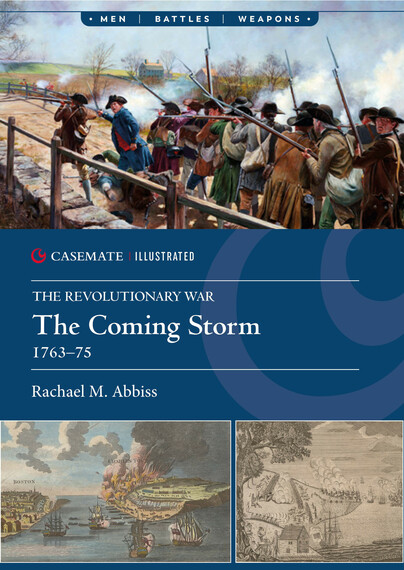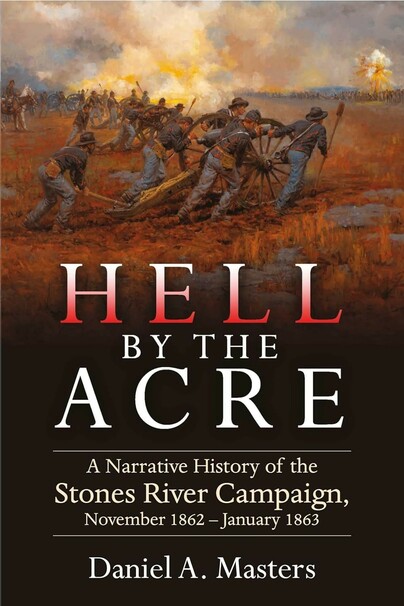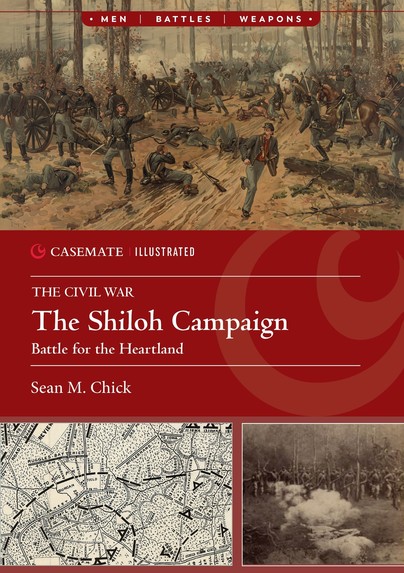
Format: Paperback
Pages: 128
ISBN: 9781636244358
Pub Date: 15 Feb 2025
Illustrations: 150 photographs, maps and artwork
Description:
By October 1943, the German 17th Army had been forced to retreat from the Kuban bridgehead across the Kerch Strait to Crimea. During the following months, the Red Army pushed back the German forces in the southern Ukraine. In November 1943, they eventually cut off the land-based connection of 17th Army through the Perekop Isthmus.
Hitler prohibited a sea evacuation of 17th Army because he thought the Red Army could use the Crimean Peninsula to launch air attacks against Romanian oil refineries.In November 1943, the Russian launched a massive amphibious assault at two locations on the eastern coast of the Crimea, but its units were unable to prevent an Axis counterattack that collapsed the southern bridgehead. The Red Army held the bridgehead at Yenikale, from which they launched further offensive operations, culminating in a huge offensive in April 1944.Although the 17th Army bitterly contested every bit of ground, it was unable to stop the advance. Soviet forces reached Kerch on April 11, forcing the 17th Army to retreat towards Sevastopol. The remaining Axis forces in the Crimea were concentrating around the city by the end of the third week of April.The Germans intended to hold Sevastopol as a fortress, as the Russians had done between 1941 and 1942. However, the fortifications of the city had not been restored and the city fell on 9 May.From mid-April, Romanian and German ships undertook a huge and complex evacuation operation. The last phase of the evacuation, following the fall of Sevastopol, saw 37,000 troops transported under constant attacks from Soviet aircraft and shore artillery. Overall around 57,000 men were lost during the evacuation.Fully illustrated with rare and unpublished photos, this is a detailed account of the dogged attempt to retake the Crimea in 1943–44.

Format: Hardback
Pages: 320
ISBN: 9781636243276
Pub Date: 31 Jan 2025
Illustrations: B/W & colour
Description:
Africa currently faces more wars, insurgencies, army mutinies, coups d’état and rebellions than at any time since World War II. Conflict in all forms has become endemic, now accentuated by a relative newcomer: Jihadism, increasingly linked to either Islamic State or al-Qaeda. The year 2020 saw a record high in state-based conflicts on the African continent: around 22,000 incidents of armed conflict recorded.
There were two dozen country-based military struggles recorded, three or four more than in 2018. Of these, 13 battled over territory, the highest number ever. Incidents of conflict have risen each year since, and the broader canvas since Russia’s invasion of the Ukraine suggests things will continue to worsen. Islamic Jihadist forces are responsible for much of this, involved in a succession of conflicts in Africa. These range all the way across the Sub-Sahara swathe, Mauretania, Mali, Burkina Faso and Chad, the Sudans as well as Somalia. A more recent entrant to the fray is Tanzania, whose Dar es Salaam government in late 2021 appealed to the European Union for military help to counter an escalating Jihadist insurgency in its southern province. The upward trend is sobering. And there are long-term security implications both within and beyond Africa – if conditions do deteriorate, Europe will ultimately be threatened. Veteran war correspondent Al Venter brings his decades of experience to illuminate what Islamic Jihadist forces are effecting in Africa, and why, and what the future may hold.

Format: Hardback
Pages: 224
ISBN: 9781636245003
Pub Date: 31 Jan 2025
Illustrations: 10 images
Description:
A compelling novel about a young man's entry into the Vietnam War, and how that boy becomes a man under extraordinary circumstances, written by a former Green Beret. Join Garner, Dodge, and the rest of RT Iowa as they venture "across the fence" to stem the flow of the North Vietnamese on the Ho Chi Minh Trail.

Format: Paperback
Pages: 128
ISBN: 9781636244792
Pub Date: 31 Jan 2025
Illustrations: Over 120 photographs and illustrations
Description:
The summer of 1863 started off disastrously for the Army of the Potomac in the Eastern Theater. In early May, Confederate General Robert E. Lee’s Army of Northern Virginia defeated and humiliated Major General Joseph Hooker’s army at the Battle of Chancellorsville.
While both armies reorganized in the wake of Chancellorsville’s massive losses, Lee then maintained the initiative and launched an invasion of Pennsylvania. Throughout June, Lee’s army advanced deeper into Pennsylvania and Northern efforts to stop his progress were ineffective until Major General George Meade replaced Hooker as commander of the Army of the Potomac. On July 1, 1863, Meade and Lee’s large armies collided outside of the crossroads town of Gettysburg, Pennsylvania. The stakes were never higher for either army as the newly promoted Meade defended Northern soil, while General Lee risked everything by taking the war into enemy territory.The first day of the Battle of Gettysburg is often overshadowed by fighting on the following days, but July 1 was one of the bloodiest single engagements of the entire Civil War. Many of the decisions leading to and through Gettysburg’s first day remain steeped in controversy. Did Meade intend to fight on the Pipe Creek line in Maryland until subordinates such as Major General John Reynolds forced the engagement at Gettysburg? Did the absence of J. E. B. Stuart’s cavalry really leave Lee “blind” to his opponent’s movements? Was Lee’s desire to avoid a general engagement ignored by his own officers? With neither commanding general on the battlefield for much of the day, crucial decisions remained in the hands of subordinates such as John Buford, John Reynolds, A. P. Hill, Richard Ewell, and Oliver Howard.This Casemate Illustrated volume sets the stage for the Civil War’s greatest battle and covers the heroism, decisions, and mistakes made on the first day at Gettysburg.

Format: Paperback
Pages: 128
ISBN: 9781636240923
Pub Date: 31 Dec 2024
Illustrations: 100 photographs and illustration
Description:
The 17th and 18th centuries witnessed a period of almost constant conflict in Europe and North America. In New England, the threat of invasion from the French in the North and the Spanish in the South weighed heavily on the colonists. The Crown's solution was to send an army from Britain to help govern, organise and protect the colonies, but ultimately this was not enough to secure loyalty and quell the whispers of revolt.
For over a century, discontent simmered, but allegiance to the Crown and the military protection provided by Britain superseded – at least initially – the majority of grievances. Before 1763, many colonists fought for King and Country during multiple battles and the monarchy had demonstrated an ability to support and defend the colonies. Over time, however, Britain and the colonists disagreed on methods of governance and taxation, and how best to protect territory and trade. As wars waged on, allegiances became strained and imperial control required a different and perhaps more considered approach. This was not forthcoming, as Crown and Parliament continued to tighten political and economic rule, which both divided and provoked the colonists. Some, such as the political propagandist Thomas Paine, eventually argued: 'the period of debate is closed… 'TIS TIME TO PART.'

Format: Paperback
Pages: 128
ISBN: 9781636240787
Pub Date: 31 Dec 2024
Illustrations: 100 photographs and illustration
Description:
Having declared their independence, Britain's former colonies in North America would need to fight for their liberty. The response from the other side of the Atlantic was slow, but when it arrived it appeared overwhelming. Hundreds of ships and tens of thousands of troops gathered to re-establish the Crown's control.
If the Revolution was not to die in its first year, the Americans would need to take on the largest expeditionary force ever sent by Great Britain up to that point… with an army of amateurs.The 1776 campaign saw a nearly uninterrupted string of British victories; at Long Island, White Plains and Fort Washington the Americans proved unable to stand against the disciplined regulars led by General William Howe, who received a knighthood for his efforts. The war appeared all but over as General George Washington led the tattered remnants of his army to safety at the end of the year, but as British thoughts turned to the next campaign, Washington showed that he was not yet finished, winning significant morale-boosting victories at Trenton and Princeton.Detailing the armies, commanders, strategies and tactics employed on both sides, The Northern Strategy, 1776 takes a fresh look at one of the most remarkable campaigns of the 18th century, one in which the British failed to secure their longed-for knockout blow and instead found themselves drawn into a long and painful war of attrition.

Format: Paperback
Pages: 288
ISBN: 9781611216974
Pub Date: 15 Dec 2024
Illustrations: 12 images, 6 maps
Description:
By the time Albert Castel’s Decision in the West: The Atlanta Campaign of 1864 appeared in 1992, Savas Woodbury Publishers had already made important contributions to the campaign scholarship by publishing a collection of original essays by some of the field’s most noted authors, including Steven Woodworth, writing about the Confederacy’s command options in the Winter of 1863-64. Editors Theodore P. Savas and David A.
Woodbury next assembled another group of articles that included such luminaries as Richard McMurry and William R. Scaife. The pair of paperbacks were published together in 1994 in a special hardcover edition with fold-out maps entitled The Campaign for Atlanta & Sherman’s March to the Sea, Volumes I and II. Now, almost three decades later, Savas Beatie proudly announces the publication of its third volume in the series. Once again, cutting-edge scholarship is presented in such essays as Brian Wills’ “Forrest and Atlanta” and Larry Daniel’s “The Adairsville Affair.” Stephen Davis wonders why the battle of Jonesboro (August 31-September 1) still draws so much attention when Federal troops had already cut Hood’s last railroad line into Atlanta, sealing the fate of the city even before the battle had begun.Additional essays address the impact of Sherman’s campaigns on Georgia women, Joe Johnston’s self-aggrandizing campaign accounts, and more.Like its predecessors, The Campaign for Atlanta and Sherman’s March to the Sea, Volume 3 will be highly sought by students of the campaign, and western theatrists in general.

Format: Paperback
Pages: 128
ISBN: 9781636243887
Pub Date: 21 Nov 2024
Illustrations: 120–150 illustrations
Description:
In early 1945, the Red Army marched into East Prussia. Having advanced across Poland, relentlessly pushing back German forces, the Red Army built up forces along the Oder River, preparing for the final push towards Berlin. But before that battle could take place, it was necessary to clear and destroy German forces in Pomerania and West Prussia.
In February 1945, the 2nd Byelorussian Front was advanced west north of the Vistula River toward Pomerania and the major port city of Danzig, with the primary aim of protecting the right flank of Zhukov’s 1st Byelorussian Front, which was pushing towards Berlin. The opening of the offensive saw a series of heavy attacks east of Neustettin against the towns of Kontiz and Koslin. The fighting was bitter, resulting in the entire left wing of the 3rd Panzer Army being cut off.Forward Soviet tank units reached the Baltic, and the German forces in Pomerania became trapped in a series of encirclements. Russian troops then pushed on to Danzig—strategic location and the last German stronghold in the region—reaching it in early March and putting it under siege. A third stage was the operation to take the Arnswalde and Kolberg areas. Kolberg was one of the key German positions in the “Pomeranian wall,” the vital link between Pomerania and Prussia. The German high command had planned to use the port facilities for the logistical supply of nearby German forces, and hoped that the presence of this stronghold would lure Soviet forces away from the main thrust toward Berlin. The ensuing battle was brutal, with Soviet troops eventually seizing Kolberg. Finally, spearheads of the 1st Byelorussian Front advanced against the German Eleventh SS Panzer Army, which was being assembled in Pomerania. What followed was a bitter and bloody battle for the town of Altdamm.The offensive successfully cleared the remnants of German forces northeast of Berlin, allowing Zhukov’s forces to finally launch the battle of Berlin from the Seelow Heights on the Oder on April 16, 1945.

Format: Paperback
Pages: 128
ISBN: 9781636244396
Pub Date: 21 Nov 2024
Illustrations: photographs, maps and artwork
Description:
At the beginning of 1943, the German armed forces were in crisis on the southern front in Russia. The Soviets had launched a series of offensives from November 1942 that pushed the Germans back hundreds of kilometers. The Germans had no more significant reserves available, and enormous breaches had opened between defensive lines.
In early January 1943, the Soviets attacked again, with the aim of reconquering the industrial city of Kharkov and destroying the remaining German and Axis troops in southern Ukraine, including the 4. Panzerarmee, 1. Panzerarmee, Armeeabteilung Hollidt and Armeeabteilung Fretter‐Pico.After the encirclement of 6. Armee at Stalingrad and the destruction of the Axis forces there, the loss of these four armies would certainly have led to German defeat on the Eastern Front. Believing victory was near, Stalin and his generals decided to launch their new offensives even before the garrison of Stalingrad surrendered. The main effort fell on Army Group Don, newly formed and with little forces available. Facing a massive offensive, Commander Erich von Manstein was ordered to hold the city at any cost, risking the destruction of two divisions of the Waffen‐SS and the “Grossdeutschland” army division. SS Panzer Corps commander Paul Hausser disobeyed Hitler’s order and ordered the retreat from Kharkov, saving the two SS divisions. This meant that Manstein had at his disposal forces needed to launch his counteroffensive.The subsequent battles for Kharkov saw the three divisions of the Waffen‐SS—Leibstandarte Adolf Hitler, Das Reich and Totenkopf— fighting together for the first time. In the first phase of the offensive, the SS Das Reich and Totenkopf marched 100 kilometers south of Kharkov, blocking the Soviet army from capturing the bridges over the Dnieper River, while the Leibstandarte successfully defended the corps supply base in Krasnograd. After protecting the bridges over the Dnepr, the Das Reich and Totenkopf units headed north and regained control of the vital railway network south of Kharkov. The Soviet 3rd Tank Army was forced to abandon its attack against Krasnograd to regroup south of Kharkov and protect the city from Hausser’s divisions. At that point the Leibstandarte joined the other divisions of the corps SS to eliminate Soviet forces and recapture Kharkov. With its reconquest, Southern Ukraine returned firmly under German control.This is a fully illustrated account of the decisive victory attained by the SS Panzer Corps divisions at a time of serious crisis for the Axis forces.

Format: Hardback
Pages: 640
ISBN: 9781611217124
Pub Date: 15 Nov 2024
Illustrations: 25 images, 17 maps
Description:
The waning days of 1862 marked a nadir in the fortunes of the Union. After major defeats at Fredericksburg in Virginia and Chickasaw Bayou in Mississippi, it fell to Maj. Gen.
William S. Rosecrans and his Army of the Cumberland to secure a victory that would give military teeth to the Emancipation Proclamation set to take effect on January 1, 1863. Rosecrans moved his army out of Nashville on the day after Christmas to Murfreesboro, met

Format: Paperback
Pages: 128
ISBN: 9781636244600
Pub Date: 15 Nov 2024
Illustrations: 150 photos
Description:
A fully illustrated introduction to the role, and experience, of the Panzer crewman.The German Panzerwaffe ripped up the rulebooks of war that had been laid down by the grinding slaughter of the trenches of World War I. Armored vehicles, close-air support, and bold leadership based on mission command, Auftragstaktik, cut a deadly swathe through the armies of east and west Europe.
The Panzers made a significant contribution to Nazi successes; they remained steadfast in defense as their conquests slipped away their grasp from the apogee at Stalingrad and El Alamein in late 1942, through the long years of retreat to final defeat. Attrition and overwhelming odds blunted the opportunities for advances, but with increasingly powerful weaponry, the Panzerwaffe stiffened the German defensive backbone right to the end.Part of the reason for these successes was undoubtedly the Panzers themselves, but it wasn’t just the weapons that led to the Panzers’ successes—it was the way they were handled. A weapon is only as good as those who use it and the Panzertruppen—from higher command down to individual crew members—proved themselves to be very good at using their weapons. Not just the men who fought in the tanks but those who maintained them and kept them in the field, recovered and rebuilt the casualties, and dealt with the over-complexity of design and the huge variety of types of tank, weapon and ammunition. Selection and training standards—so good in the early war years—may have dropped off as wartime exigencies bit deep, but from 1939 to 1945 German Panzer crew were second to none. This Casemate Illustrated provides a full introduction to the role, and experience, of the Panzer crewman.

Format: Hardback
Pages: 352
ISBN: 9781611217087
Pub Date: 15 Nov 2024
Series: Savas Beatie Military Atlas Series
Illustrations: 2 images, 122 maps
Description:
The Maps of Second Bull Run: An Atlas of the Second Bull Run/Manassas Campaign from the Formation of the Army of Virginia Through the Battle of Chantilly, June 26 – September 1, 1862, continues Bradley M. Gottfried’s efforts to study and illustrate the major campaigns of the Civil War’s Eastern Theater. This is his tenth book in the ongoing Savas Beatie Military Atlas Series.
President Abraham Lincoln’s frustration with George B. McClellan’s inability to defeat Robert E. Lee’s Army of Northern Virginia and capture Richmond dramatically increased after the unsuccessful Seven Days’ Battles. The president combined three small armies into the new Army of Virginia and placed it under Maj. Gen. John Pope, who had overseen several successes in the Western Theater.Pope’s growing aggressiveness, combined with McClellan’s passive posture on the Peninsula, forced Lee to turn his attention toward the new threat from the north. Thomas “Stonewall” Jackson moved his wing of the Army of Northern Virginia to confront Pope. A bloody battle at Cedar Mountain on August 9 halted Pope’s move south, and Jackson’s raid on the vast stores at Manassas Junction triggered another confrontation, this time at Kettle Run.As Jackson settled into a defensive position on the plains of Manassas, and with McClellan’s troops having abandoned the Peninsula, Lee moved his other wing under James Longstreet rapidly north. Pope missed an opportunity to prevent the junction of Lee’s wings by not stopping Longstreet at Thoroughfare Gap.The Battle of Second Bull Run began on the evening of August 28 when Jackson tangled with Union troops at the Brawner Farm. Pope spent much of the following day hammering Jackson’s front, with no idea that Longstreet had arrived on the field. The Union assaults continued on August 30 until Longstreet launched a massive assault that rolled up the Union left flank and collapsed Pope’s army. The retreat was briefly interrupted by some of Jackson’s units at Chantilly, which ended the campaign.The Maps of Second Bull Run plow new ground by breaking down the entire campaign into sixteen map sets or “action sections,” enriched with 122 detailed full-page color maps. These cartographic originals bore down to the regimental and battery level. They include the march to and from the battlefields and virtually every significant event in between. At least two—and as many as ten—maps accompany each map set. Keyed to each piece of cartography is a full-facing page of detailed text describing the units, personalities, movements, and combat (including quotes from eyewitnesses) depicted on the accompanying map, all of which make the cavalry actions come alive.This presentation allows readers to easily find a map and text on virtually any portion of the campaign. Serious students will appreciate the extensive endnotes and complete order of battle and take the book with them to the battlefields. A final bonus is that the maps unlock every other book or article written on any aspect of the campaign.Perfect for the easy chair or for stomping the hallowed grounds, The Maps of Second Bull Run is a seminal work that belongs on the bookshelf of every serious and casual student of the battle.

Format: Paperback
Pages: 128
ISBN: 9781636243924
Pub Date: 15 Nov 2024
Description:
A full account of the Wilderness to the James River, including Grant's rise to high command, the condition of the armies going into the critical 1864 campaign, a deep look at the commanders on both sides, and the strategy of the campaign from both perspectives. The study is combat, strategy, and tactics from the first day of action until the last, when Grant—unable to capture Richmond, but now south and east of the capital—builds a long bridge and crosses the James River to attack Petersburg. Illustrated by photographs and excellent maps, it will conclude with a note about visiting the battlefields, the casualties, the treatment of wounded, and the burial of the dead.

Format: Paperback
Pages: 128
ISBN: 9781636243696
Pub Date: 15 Nov 2024
Illustrations: 100-120 photographs, artworks and maps
Description:
After taking Forts Henry and Donelson, the Union army prepared to try and take the vital rail hub of Corinth, Mississippi. To facilitate this, Major General H. Halleck planned to combine Grant’s Army of West Tennessee with Buell’s Army of the Ohio.
Meanwhile the newly formed Confederate Army of the Mississippi was placed under the command of General A. S. Johnston. Johnston planned to attack Grant’s encampment before Grant and Buell could combine their commands.The Confederate army left Corinth and marched north into Tennessee. On the morning of April 6, 1862, Johnston attacked at Shiloh, taking Grant’s forces by surprise. Grant’s troops put up a tenacious defense with their backs against the Tennessee River. Unfortunately for the Confederates, Johnston was killed early that afternoon. Buell’s army arrived that night and next morning launched a counterattack along with Grant’s semi-organized survivors. The Union forces were too large to be stopped, and after a stout defensive effort Beauregard ordered a withdrawal. The first great bloodbath of the Civil War was over, resulting in up to 30,000 killed, wounded, and captured. Its ramifications would be felt for the rest of the war.Illustrated with photographs, paintings and maps, this is a full account of the first large set-piece battle of the war, the only time a large Union army was taken by surprise.

Format: Paperback
Pages: 128
ISBN: 9781636244372
Pub Date: 15 Nov 2024
Description:
In the spring of 1945, simultaneously with the battle of the Seelow Heights, powerful Red Army spearheads participated in a three sub-offensive operations in order to clear German resistance for the Berlin operation. Between April 13 and 17, 1945, elements of the 2nd Belorussian Front replaced parts of the 1st Belorussian Front and began to prepare their offensive operations. Bitter fighting ensued, as German units desperately tried to hold their positions.
Whilst these operations continued with unabated ferocity, Zhukov’s 1st Belorussian Front broke through the final line of the Seelow Heights and nothing but broken German formations lay between them and Berlin.On April 20, Hitler's 56th birthday, Soviet artillery of the 1st Belorussian Front began shelling Berlin in preparation for attacking the city. At the same time the 1st Belorussian Front advanced towards the east and northeast of the Reich capital, whilst the 1st Ukrainian Front smashed through the last formations of the northern wing of the German Army Group Center. What followed was the Soviet Battle for Berlin. Once the 1st Belorussian Front and 1st Ukrainian Front completely encircled the city, over one million Russian soldiers began attacking into the suburbs towards the center. They faced some 45,000 soldiers in several severely depleted Wehrmacht and Waffen-SS divisions. These divisions were supplemented by the Berlin Police force, and the Hitlerjugend and Volkssturm, mainly manned by teenaged boys.

Format: Paperback
Pages: 128
ISBN: 9781636243733
Pub Date: 15 Nov 2024
Illustrations: 100-120 photographs, artworks and maps
Description:
The 14-month campaign to regain the control of Mississippi River by capturing Vicksburg, Mississippi stands as the prime example of how the Civil War would be fought and won. The Federal government’s policy of blockading the southern ports and controlling the inland waterways would only be successful with total control of the country’s largest river. Technological advances created by the war itself and used by progressive thinking Federal and Confederate commanders ensured that this vital southern supply and logistics base would be the focal point of the war on the western waters.
Ulysses S. Grant, who had risen to fame as one of the North’s prominent heroes early in the war, boldly concluded that Vicksburg would be the next nut to crack in the Federal policy for control of the Mississippi River. Understanding that only a strong relationship with US Navy could ensure the success of Vicksburg’s surrender, Grant found a man as bold and daring as himself in David Dixon Porter and his Mississippi Squadron of ironclad gunboats and fleet of vessels. These two commanders and their trusted subordinates would frustrate John C. Pemberton’s attempts to defend Mississippi and eastern Louisiana for the Confederacy. A lack of experience in commanding such an important assignment, limited resources, poor staffing, and a Confederate government consumed with the war in the east ensured Pemberton’s position would be insurmountable as the Confederacy’s tenuous hold on the Mississippi River began to fall apart.

















